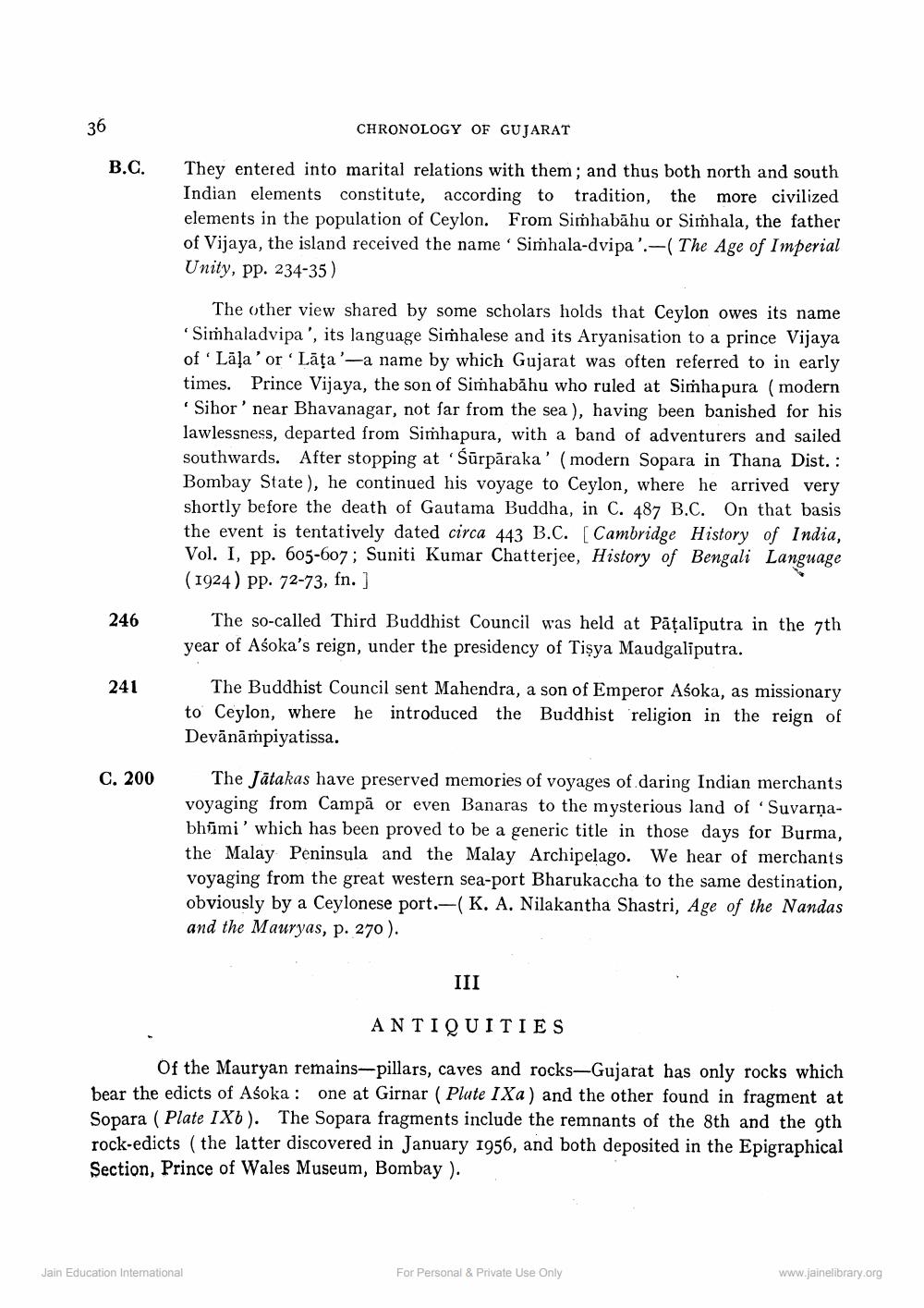________________
36
B.C.
246
241
C. 200
CHRONOLOGY OF GUJARAT
They entered into marital relations with them; and thus both north and south Indian elements constitute, according to tradition, the more civilized elements in the population of Ceylon. From Simhabahu or Simhala, the father of Vijaya, the island received the name Simhala-dvipa'.-( The Age of Imperial Unity, pp. 234-35)
The other view shared by some scholars holds that Ceylon owes its name 'Simhaladvipa ', its language Simhalese and its Aryanisation to a prince Vijaya of Lala' or Lata'-a name by which Gujarat was often referred to in early times. Prince Vijaya, the son of Simhabahu who ruled at Simhapura (modern 'Sihor' near Bhavanagar, not far from the sea), having been banished for his lawlessness, departed from Simhapura, with a band of adventurers and sailed southwards. After stopping at Sürpāraka' (modern Sopara in Thana Dist. : Bombay State), he continued his voyage to Ceylon, where he arrived very shortly before the death of Gautama Buddha, in C. 487 B.C. On that basis. the event is tentatively dated circa 443 B.C. [Cambridge History of India, Vol. I, pp. 605-607; Suniti Kumar Chatterjee, History of Bengali Language (1924) pp. 72-73, fn. ]
The so-called Third Buddhist Council was held at Pațaliputra in the 7th year of Asoka's reign, under the presidency of Tisya Maudgallputra.
The Buddhist Council sent Mahendra, a son of Emperor Aśoka, as missionary to Ceylon, where he introduced the Buddhist religion in the reign of Devanampiyatissa.
Jain Education International
The Jatakas have preserved memories of voyages of daring Indian merchants voyaging from Campå or even Banaras to the mysterious land of 'Suvarnabhami' which has been proved to be a generic title in those days for Burma, the Malay Peninsula and the Malay Archipelago. We hear of merchants voyaging from the great western sea-port Bharukaccha to the same destination, obviously by a Ceylonese port.-( K. A. Nilakantha Shastri, Age of the Nandas and the Mauryas, p. 270).
III
ANTIQUITIES
Of the Mauryan remains-pillars, caves and rocks-Gujarat has only rocks which bear the edicts of Aśoka: one at Girnar (Plute IXa) and the other found in fragment at Sopara (Plate IX6). The Sopara fragments include the remnants of the 8th and the 9th. rock-edicts (the latter discovered in January 1956, and both deposited in the Epigraphical Section, Prince of Wales Museum, Bombay).
For Personal & Private Use Only
www.jainelibrary.org




